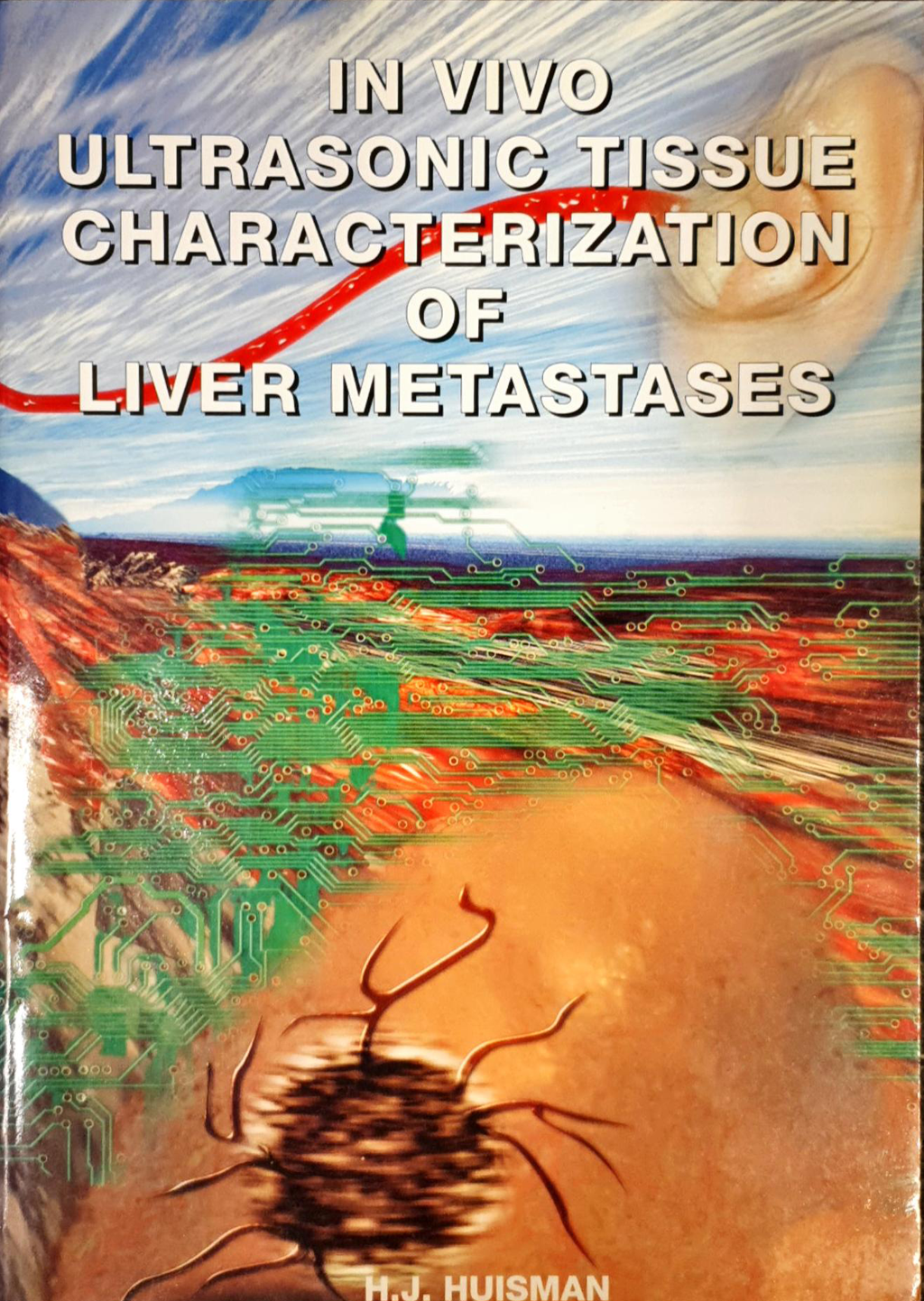In vivo ultrasonic tissue characterization of liver metastases
H. Huisman
- Promotor: A. van Oosterom
- Copromotor: J. Thijssen
- Graduation year: 1998
- Radboud University, Nijmegen
Abstract
Ultrasonic imaging is a commonly used, powerful diagnostic technique in medicine. The images allow a physician to visualize anatomical details in the human body with the intention to assess the state of the anatomy. Since the introduction of the concept of gray-scale ultrasonic imaging in the early 70's, the number of applications has increased and the image quality is still being improved. More recently, UTC strategies are being developed to quantify information in the available image on the ultrasound machine or to visualize new information in additional images. The quantification of existing visual information may help physicians to enhance the robustness and reproducibility of their assessments. This thesis describes improved and/or new UTC strategies. This research was motivated by developments in related research areas. Continuing fundamental research in medical ultrasound has led to an increase in the understanding of the physical mechanisms that govern the image formation process. The resulting theoretical insights may enhance the amount of information that can be retrieved from ultrasonic images. Recent techniques in signal processing, image processing and pattern recognition facilitate the extraction and quantification of this information. More specific, artificial neural networks have shown promising results in related problems. Finally, actual application of these techniques seems realistic as contemporary computer speed- and memory has reached a sufficient level. This chapter starts with a demarcation of the ultrasonic tissue characterization (UTC) field of research. The subsequent section then briefly summarizes previous research on UTC. Finally, the problem definitions for the subsequent chapters in this thesis are formulated
